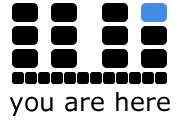Negotiating Standards in Composition Studies
The establishment and adherence to standards within a discourse community have always been crucial concerns for rhetoricians. Indeed, many of the approaches that scaffold modern composition pedagogy are predicated on questions of how rhetors are able to analyze a particular rhetorical situation; how we develop tropes and figures; and how we can effectively participate in discourse communities. As a courses designed to prepare students for rhetorical work across the disciplines, many approaches to composition and rhetoric instruction are based on students modeling their writing on received standards—examples of “expert rhetors writing well.” Students are asked to infer standards from these models and apply them to their own arguments. I see “readymade” standards as general standards that have general applications, which have emerged over long periods of time, and “Standards in the Making” (SITM) as those standards that students synthesize by adapting readymade standards to specific rhetorical situations. These two kinds of standards “bookend” the rhetorical tradition and serve different functions, with SITM slipping into readymade standards over time.
If we focus on metadata standards in the same way, as a backdrop against which SITM can be developed, then such a view has broad implications for the work of composition instruction. Indeed, it could be said that the primary goal of any composition class is to provide a space in which the synthesis of new standards is facilitated by fostering a granular idea of those standards already in place. Examples of this turn are everywhere in composition pedagogy: the marginal comments that we write on our students’ drafts become readymade standards for peer review (with successive revisions by different editors making up a kind of “social markup” of the paper); the development of personal standards of markup for archive, retrieval and synthesis of arguments (analogous to the canons of invention and memory); etc.
It is important that rhetors are aware of the ways in which informatic technologies like metadata situate “knowledge,” include or exclude different actors, dictate hierarchy, reveal ideological and/or institutional politics and biases, and work to maintain deeply entrenched disciplinary divisions within the academy. Further, since most of the readymade metadata attached to documents is hidden (at least on the surface) from view, by focusing on metadata’s role in the construction of knowledge we are able to highlight the implicit structures that underlie scholarly discourse.
In a sense, readymade standards are both challenged and enhanced by the readymade standards of the “social web” such as folksonomies. Folksonomies are always in a state of becoming; they are always contingent and fluid—shifting and changing as different users contribute to the metadata in ways that, often, make folksonomic metadata more able to change with multiple rhetorical situations than readymade standards administered by a content authority can. The other side of this, however, is that folksonomies almost always reveal the chaotic kairos of knowledge production and consumption in ways that readymade standards do not.
